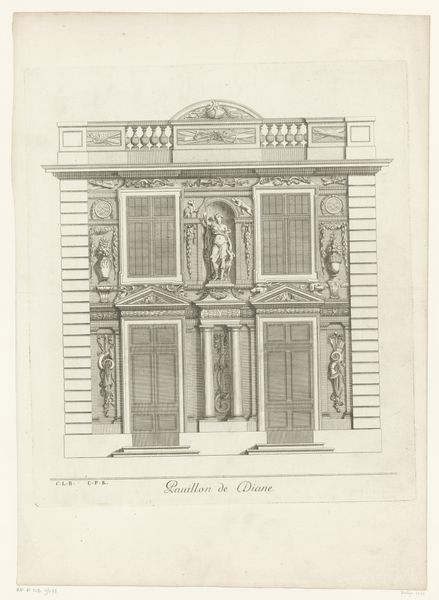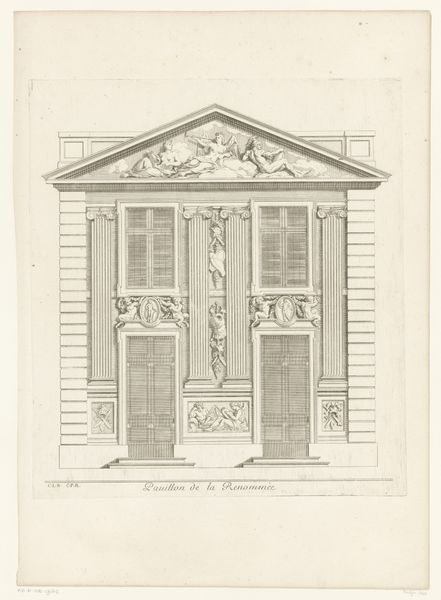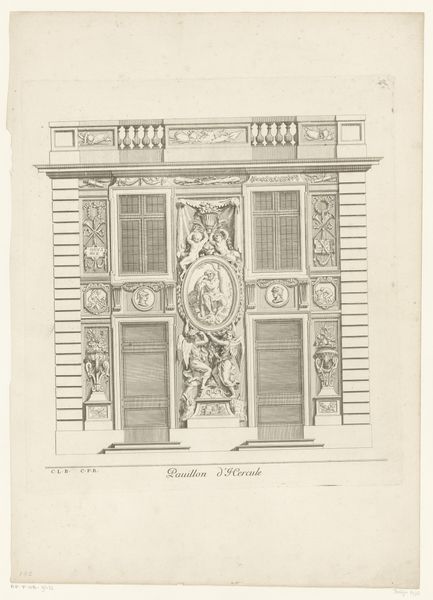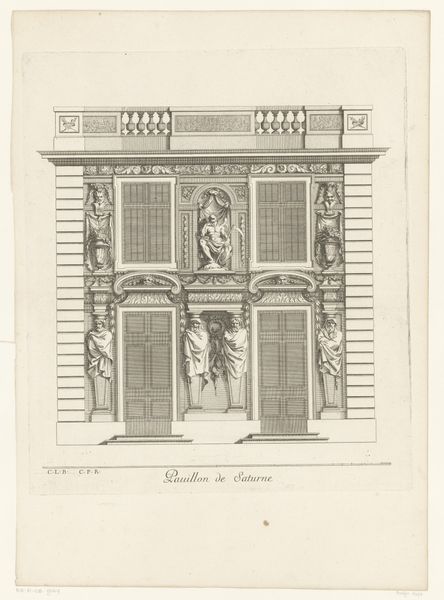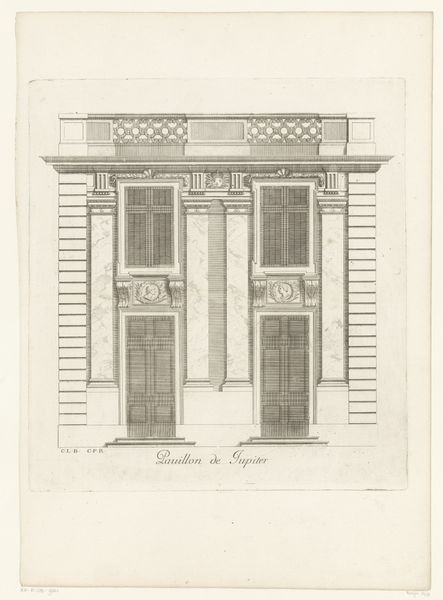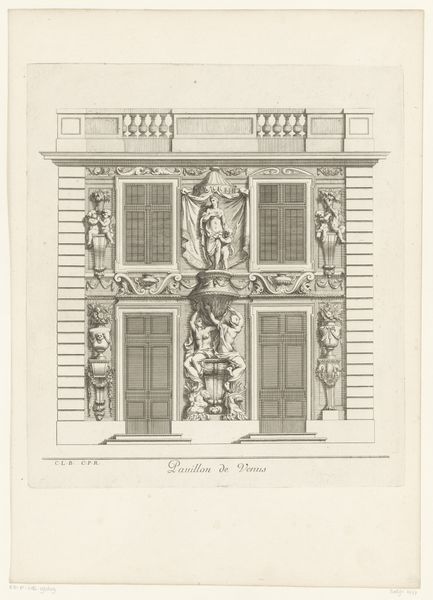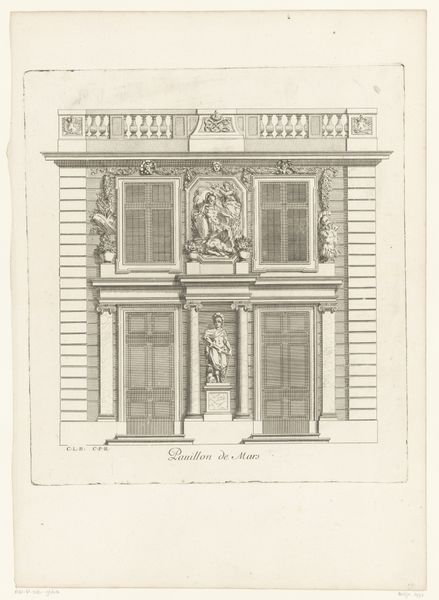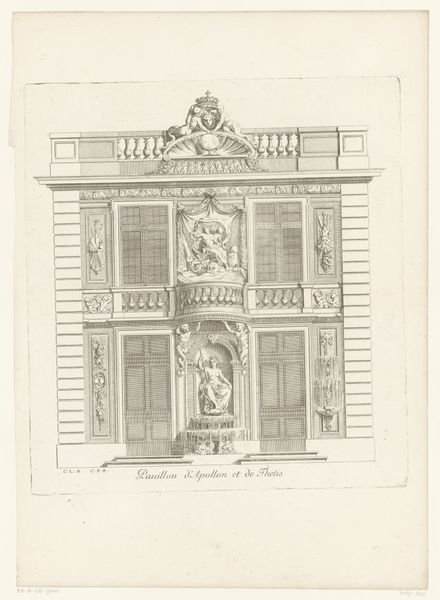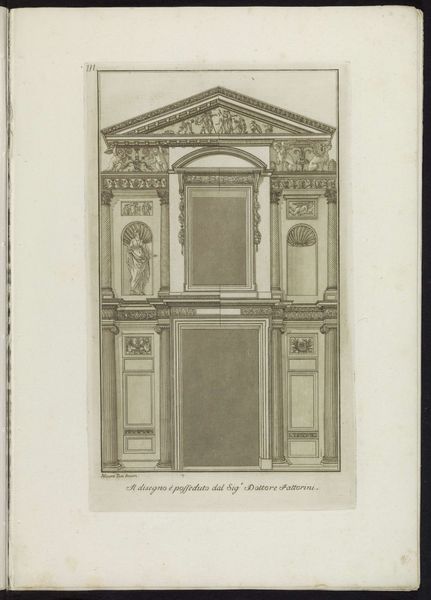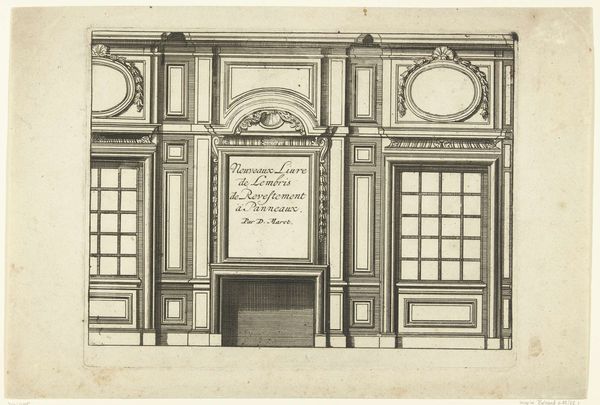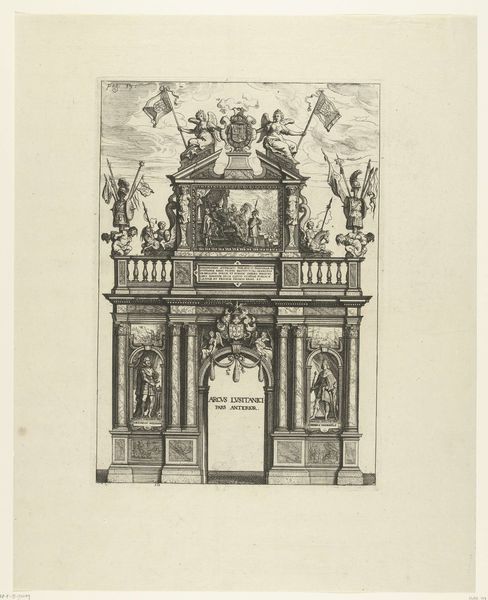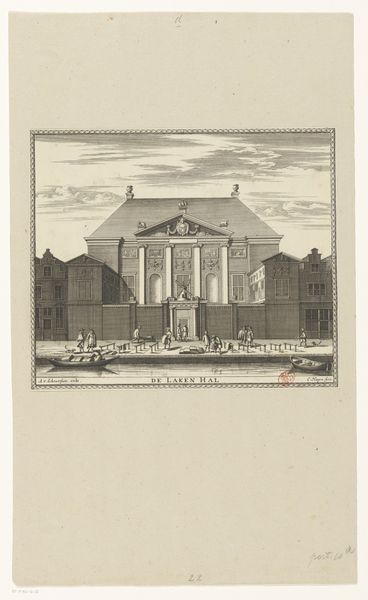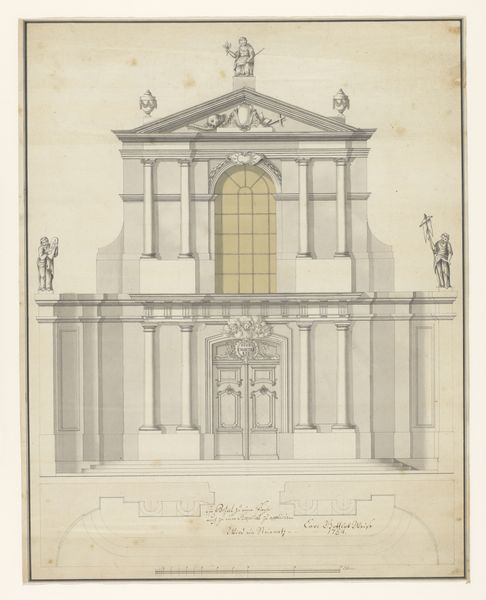
print, engraving, architecture
#
baroque
# print
#
landscape
#
form
#
line
#
cityscape
#
engraving
#
architecture
Dimensions: height 386 mm, width 346 mm
Copyright: Rijks Museum: Open Domain
Editor: Here we have Louis de Châtillon's "Paviljoen van Abundantia," made between 1672 and 1686. It's an engraving, so we're seeing architecture rendered through very specific printing methods. How does the social context affect how the piece is perceived? Curator: Well, considering its creation in the late 17th century, we must analyze the Pavilion in light of Baroque aesthetics and its patronage system. Think about what this print *is*: not the architecture itself, but a *representation* intended for circulation. This brings questions to mind of how images reproduce wealth and power in society. The abundance it signifies becomes a commodity through this print, doesn't it? Editor: Absolutely. The engraving process itself seems significant – it's so meticulous. I wonder what choices were available in replicating images. Curator: Exactly! It forces us to confront the labor involved. Engraving requires highly skilled artisans. Consider that the artist would not have been able to easily express changes. The print then is also an expression of economic relationships around the project itself, but one level removed. Editor: That's interesting, since the precision almost makes it seem machine-made. It almost hides the artistic labour that was involved. Curator: That's the paradox. The quest for precision and uniformity hides the hand, almost idealizing production in some ways. What do you make of that? Editor: That actually shifts my understanding entirely. The piece seemed simply like an architectural plan at first glance, but when framed materialistically it really captures the complicated modes of Baroque economics and artistic expression. Curator: Indeed! Thinking about the materials, the processes, and the conditions of production open up questions we might never have thought to ask.
Comments
No comments
Be the first to comment and join the conversation on the ultimate creative platform.
